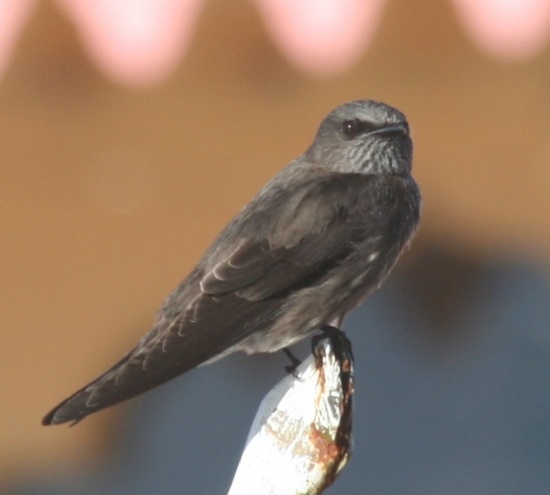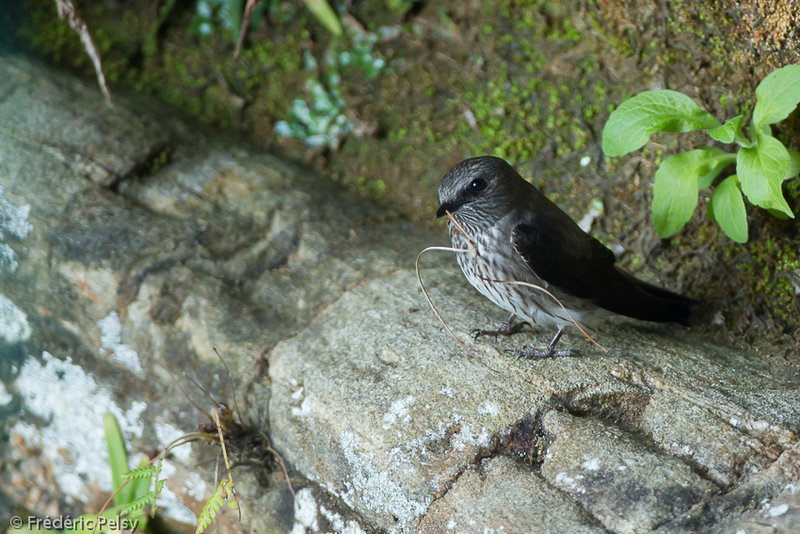
Phedina borbonica
SUBFAMILY
Hirundinae
TAXONOMY
Hirundo borbonica Gmelin, 1860.
OTHER COMMON NAMES
English: Mascarene swallow; French: Hirondelle des Mascareignes;
German: Maskarenenschwalbe; Spanish: Golondrina
de Mascarene.
PHYSICAL CHARACTERISTICS
Colored brownish overall, with a whitish rump and white
throat. Has long pointed wings and a slightly forked tail.
DISTRIBUTION
An endemic species that only breeds on the islands of Madagascar,
Mauritius, and Reunion, all in the western Indian
Ocean off eastern Africa. Migrants from Madagascar may occur
in southern and eastern Africa during the non-breeding
season.
HABITAT
Occurs in open areas, usually near water.
BEHAVIOR
It is generally a resident species, but birds from Madagascar
may wander during the non-breeding season and can occur in
continental Africa. Attracts a mate and defends a nest site by
song and aerial displays.
FEEDING ECOLOGY AND DIET
Feeds on insects, which are caught in flight.
REPRODUCTIVE BIOLOGY
Monogamous. Builds a simple cup-shaped nest of twigs on a
rocky cliff and sometimes on buildings. The clutch size is two
to three eggs, and both parents feed the young.
CONSERVATION STATUS
Not threatened. An endemic species but locally abundant
within its restricted range. Its populations are vulnerable to
devastatation by monsoons.
SIGNIFICANCE TO HUMANS
Of no direct importance to humans, except for indirect economic
benefits of ecotourism involving rare birds.
Other popular Animals
Photo Gallery of - Mascarene martin




 Animalia Life
Animalia Life